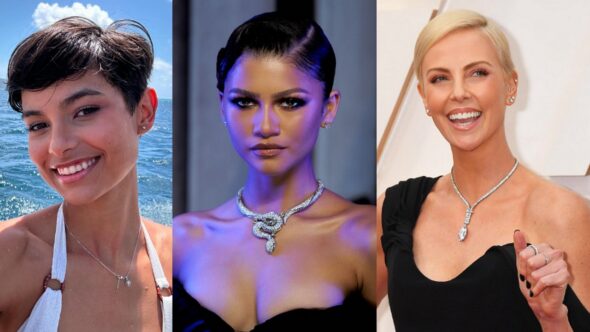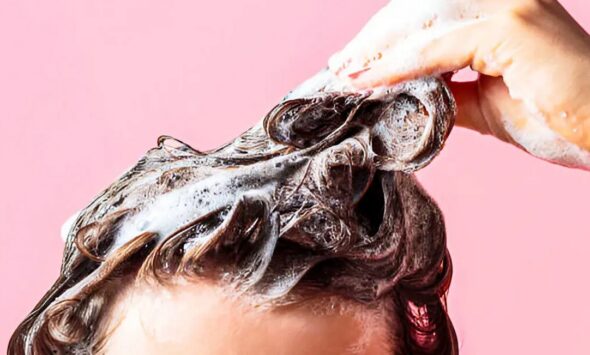The pixie cut is much more than just a haircut. Since the 1920s, it has embodied a symbol of emancipation for women. Even today, it continues to shake up patriarchal society. Focus on this iconic cut.
long hair or short hair?” This is a dilemma that has always preoccupied the minds of beauty addicts. If today both choices are more or less respected in our society, which still retains a patriarchal spirit, let me tell you that at the time things were not the same. Wearing short hair in the 1920s was downright an act of rebellion against the beauty standards dictated by men.

Even more, it was a frontal insult to the patriarchy. The history of this haircut, initially adopted by men, is simply incredible. Just like wearing pants, wearing a white shirt, or even abandoning the corset, cutting your hair very short was a way for women to emancipate themselves at the time. Focus on this movement whose only limit was, as usual, men.
The Boyish Haircut: More Than Just a Haircut
The pixie cut is more than just a hairstyle. It symbolizes a cultural revolution that has its roots in the 1920s, at the heart of a period of social and aesthetic upheaval. Far from being a simple fashion trend, it embodies a break with the patriarchal norms of the time.
The flapper, represented by figures such as Chanel or Josephine Baker, expressed a rejection of the conventions of femininity, previously embodied by long, sophisticated hairstyles. The term “flapper” itself is loaded with ambiguous and subversive connotations. Coined by Joris-Karl Huysmans, it associates the feminization of the word “boy” with the idea of the “bachelorette pad,” evoking independence, sexuality, and scandal.
Victor Margueritte’s novel La Garçonne, published in 1922, played a central role in the dissemination of this mythical figure. This book, accused of immorality (well, come on) by the conservatives of the time, shows to what extent the garçonne is not only a hair or clothing fashion but a real challenge to traditional social structures.
Margueritte depicts a bisexual, transgressive, and emancipated heroine, a vision that scandalizes post-war France, still strongly attached to pronatalist values and Christian morality. The haircut, which accompanies this revolution, then becomes a symbol of this modern woman, refusing the constraints imposed by a patriarchal society frozen in its expectations.
A pixie cut that fights for the women’s haircuts

The pixie cut is closely linked to the sexual emancipation of women, both in its representation and in its mass adoption in the 1920s. Cutting one’s hair short, for a woman of the time, was not limited to an aesthetic act, but marked a conscious rejection of gender norms.
By freeing herself from long hair and, among other things, from the corset – a symbol of a restricted and restrictive femininity – the tomboy claims control over her body and her sexuality.
At the time, the tomboy’s body was deliberately androgynous, almost erased in its feminine characteristics. This slender silhouette, with its bandaged chest and exposed arms and legs, became the emblem of a new feminine aesthetic, free from the patriarchal injunctions that assigned it to a reductive and passive sensuality.
The tomboy rejects the curves associated with motherhood and therefore reproduction (let me tell you that JD Vance is typically the kind of man she would have hated). In short, it is a gesture perceived as a direct attack on the social order (really capable chicks).
Behind this seemingly simple act of cutting one’s hair, lies a desire to free oneself from the traditional role of women who depended entirely on men. This is why it is not surprising that the ” tradwife ” trend – which exploded this year on Tiktok – has caused so much controversy.
Obviously, the boyish haircut , which abolishes the boundary between genders, is thus seen as a provocation, a threat to the established order (what a lie). The novel La Garçonne exacerbates this vision by presenting a heroine who experiments with her sexuality outside of dominant heterosexual norms, the haircut then becoming a symbol of an assumed and displayed sexual freedom.
A hairstyle that frees women from patriarchal injunctions

By cutting their hair, women of the 1920s marked their rejection of patriarchal injunctions that dictated not only their appearance, but also their role in society. The boyish hairstyle was one of the first visible manifestations of this rebellion against a system that wanted to confine them to a stereotypical image of gentleness, submission and motherhood. By adopting this cut, they distanced themselves from the image of the traditional woman, who was expected to be docile and conform to the expectations of male society.
A movement that made the patriarchy sweat
As we know, the androgyny of the tomboy, which blurs the lines between the sexes, has always caused anxiety in conservative circles. The myth of the eternal feminine, which glorifies gentleness and maternal submission, is directly called into question by this new figure. The watchwords? Freedom, surpassing oneself (notably by taking up sport) and indifference to conventions.
Critics of the time even accused the flapper of de-masculinizing men (and we rolled our eyes), thus reversing traditional gender roles, which fueled reactionary discourses on the loss of bearings in a society in full transformation.
The flapper doesn’t just challenge the patriarchal order through her appearance: she questions the very foundations of society, particularly in terms of gender and sexuality. This seemingly innocuous haircut represents a profound social upheaval.
Little reminder: in those years, women did not yet have the right to vote or to wear pants. How can I tell you that this cut has clearly become a tangible symbol of rebellion and emancipation?
A symbol adopted by many celebrities

The fact that figures such as Marlene Dietrich, Greta Garbo, and Louise Brooks—cinema icons of the 1920s and 1930s – adopted this style, helped to further strengthen its impact by popularizing this new aesthetic. Their androgynous allure, seducing both men and women, became a form of visual emancipation, a new norm that, paradoxically, imposed new constraints while freeing old ones.
Teda, the boyish haircut is part of a broader struggle for the liberation of women from patriarchal injunctions, becoming a symbol of their right to control their bodies, to live their sexuality autonomously, and to define their own identity.
This seemingly simple gesture is in reality a powerful political act that continues to resonate a century later. Scarlett Johansson, Zoé Kravitz , Cara Delevingne and Charlize Theron have all adopted it. Miss France 2024, Éve Gilles, crowned with a short boyish haircut (a first in the history of this competition), also perpetuates this legacy of revolt and liberation.
And guess what? Despite winning her Miss crown, haters were quick to harass her . It was her haircut that they deemed “not feminine enough” that became a source of mockery. In any case, there is always something, it is exhausting. When it is not the haircut, it is the weight – Selena Gomez despite her impressive career has also suffered from harassment and body shaming .
When it is neither one nor the other, it is the gender (always more) that is called into question. Imane Khelif, an Algerian boxer, is the perfect example. While she had just won the gold medal in the under 66 kg category at the Paris 2024 Olympic Games, Internet users harassed her, claiming that without makeup she looked like a man and that in reality, she would be trans (what the hell is the world going?).
Patriarchy and the Flapper: A Tale of Hate
Patriarchy has always hated the flapper. Why? Because she escapes the norms imposed on her. She is accused of “masculinizing” women, of de-virilizing men, in short, of blurring the boundaries of gender ( no comment, stupidity at its prime ). And that’s when it became political.
In the 1920s, the pixie cut symbolized role reversal and the rise of a fear of gender indifference. Conservatives of the time saw this účes as a danger to the social order. But in reality, what they feared was ( of course ) female emancipation.
“A lesbian haircut”
You’ve probably heard it before—this cliché that still lingers: “Oh, short hair? It looks lesbian.” So what? It’s no secret that queer women have often used the boyish cut to assert their identity. It belongs to all those who wish to assert their freedom.
If there’s one takeaway, it’s that hair shouldn’t be a label. Whether you’re straight, queer, bi, or lesbian, your haircut should never be an excuse for other people’s prejudices.


